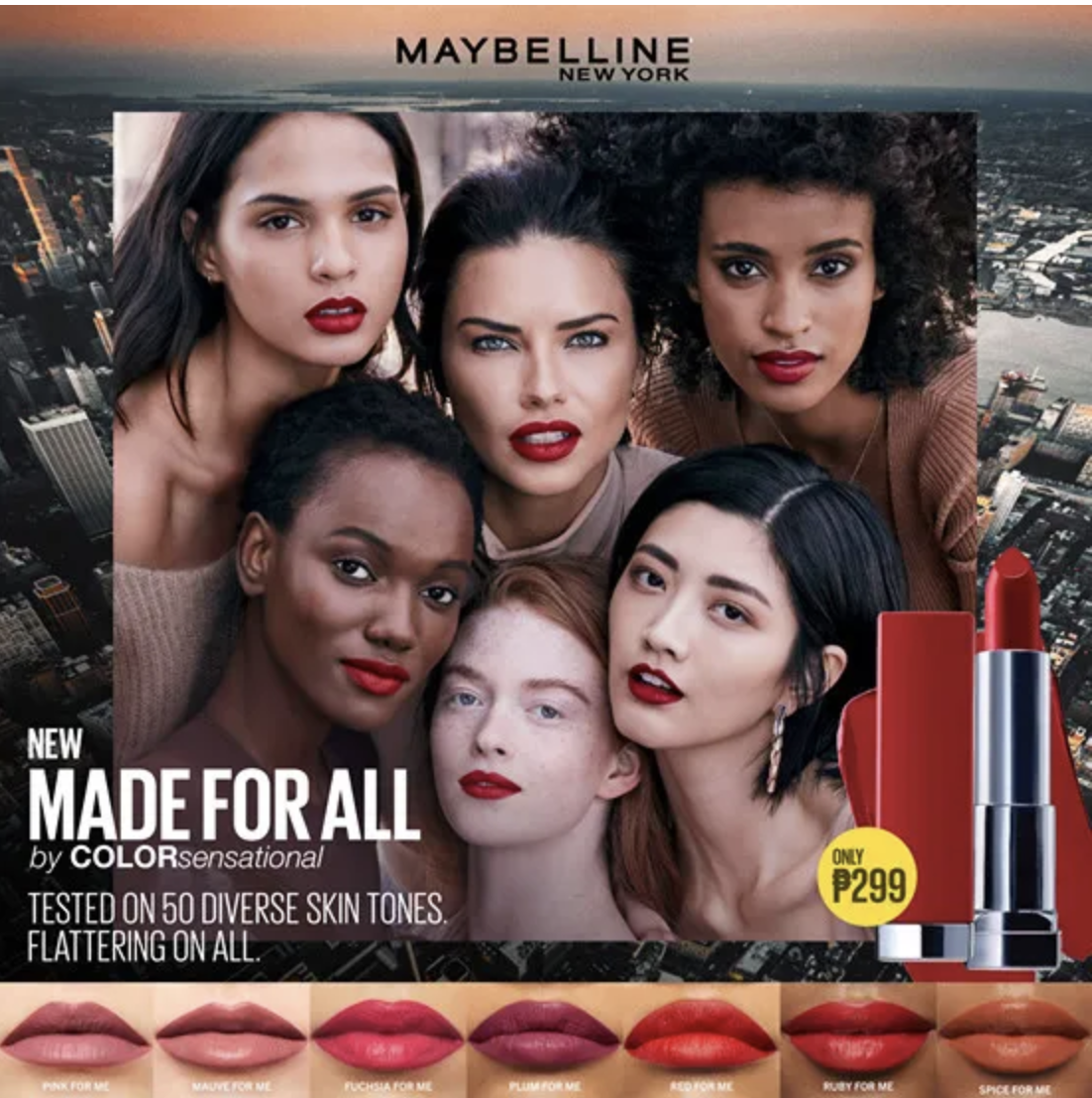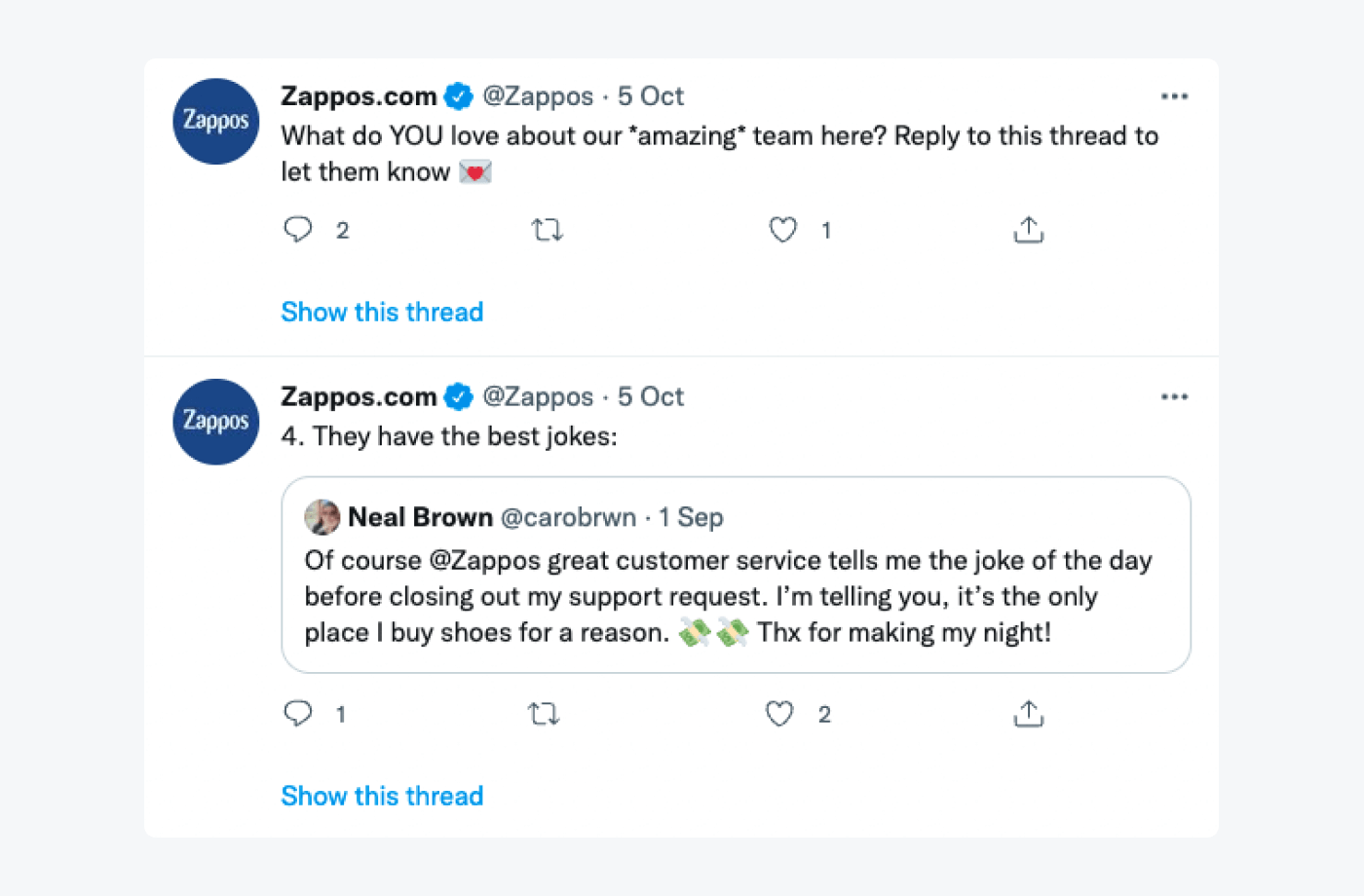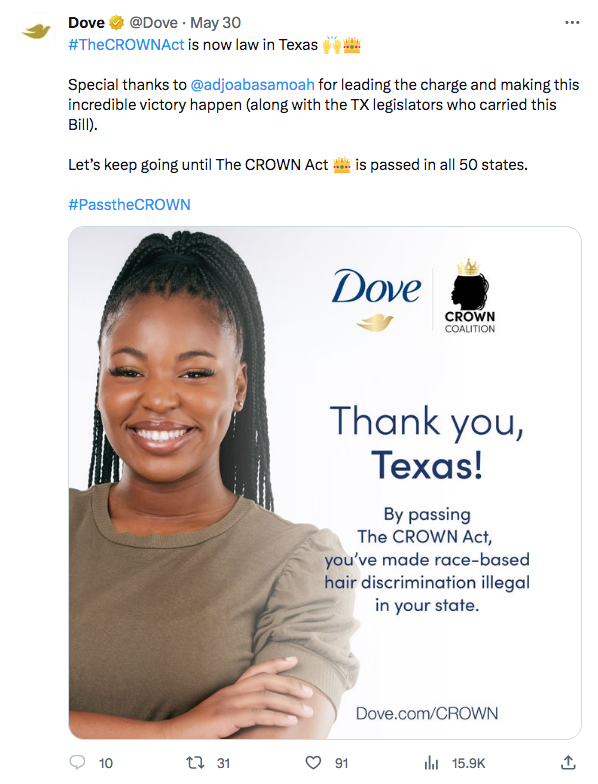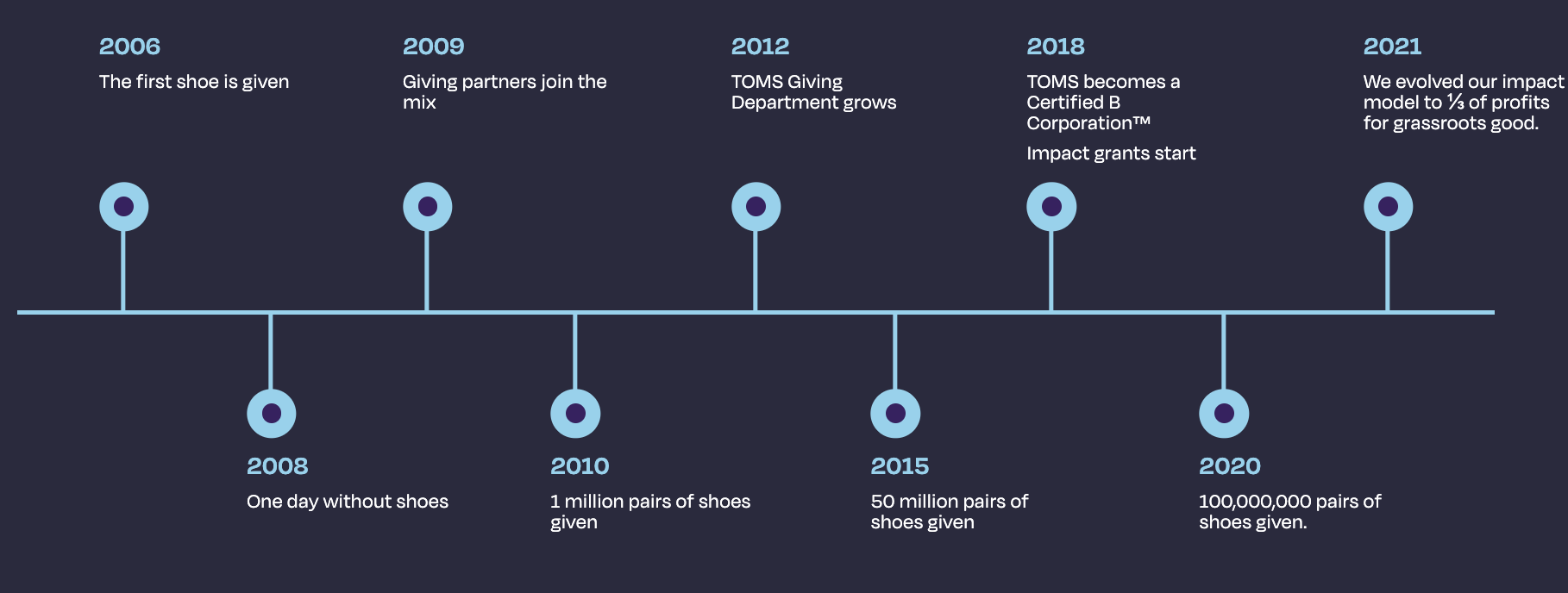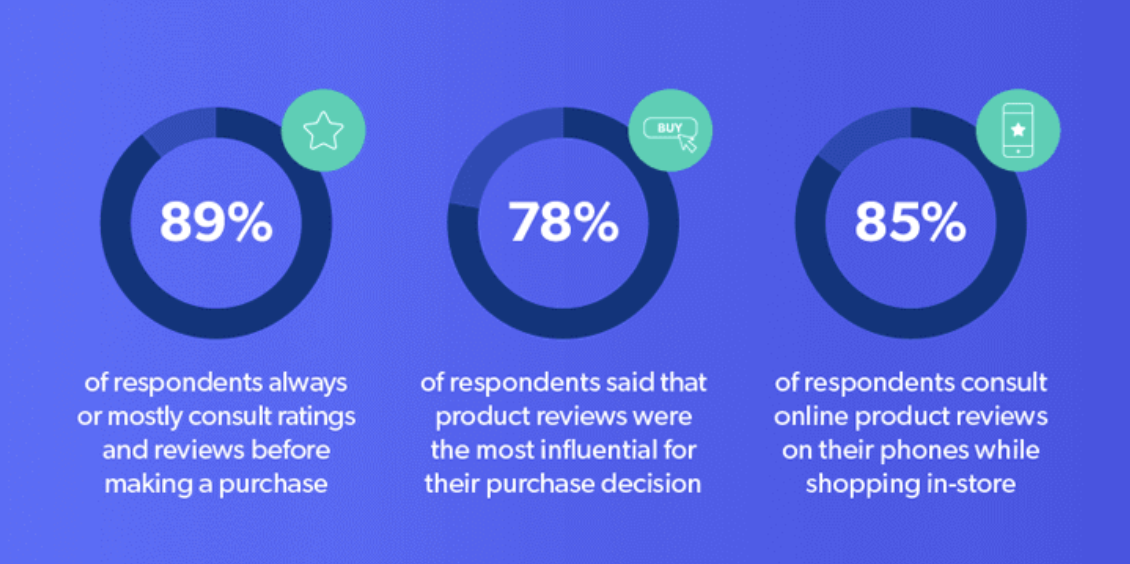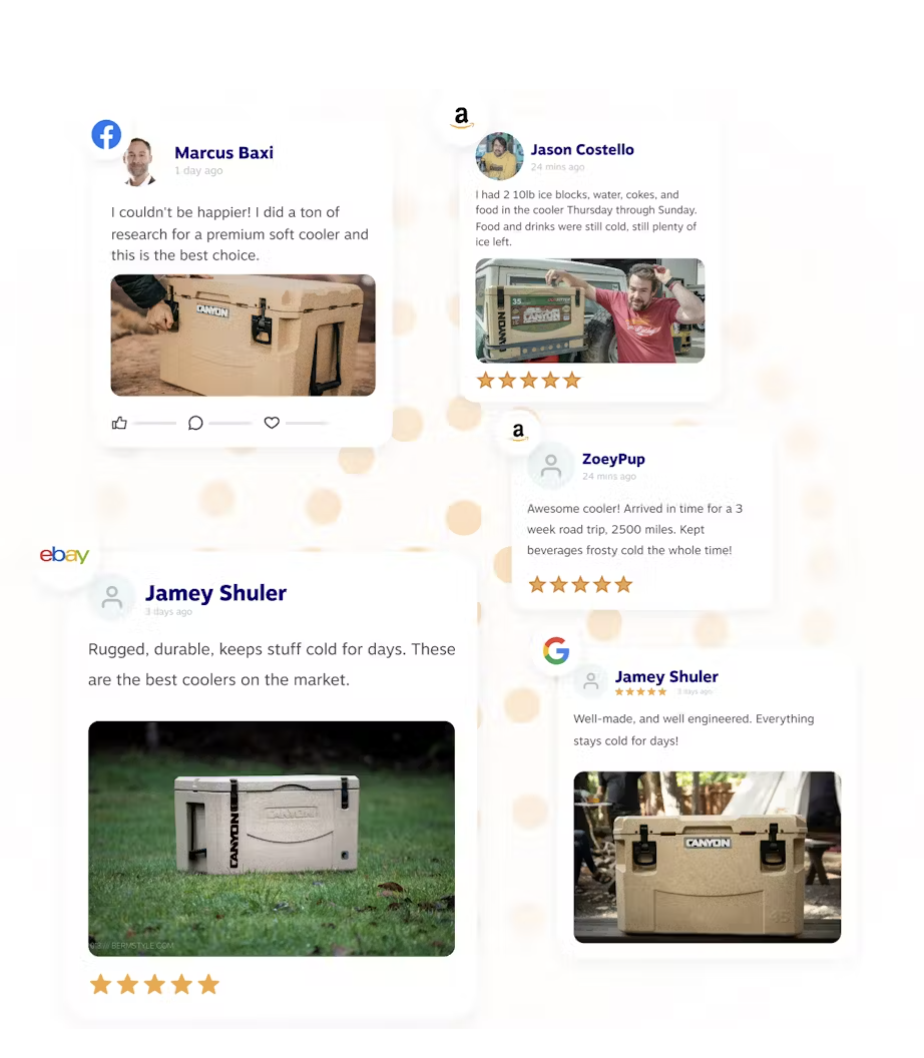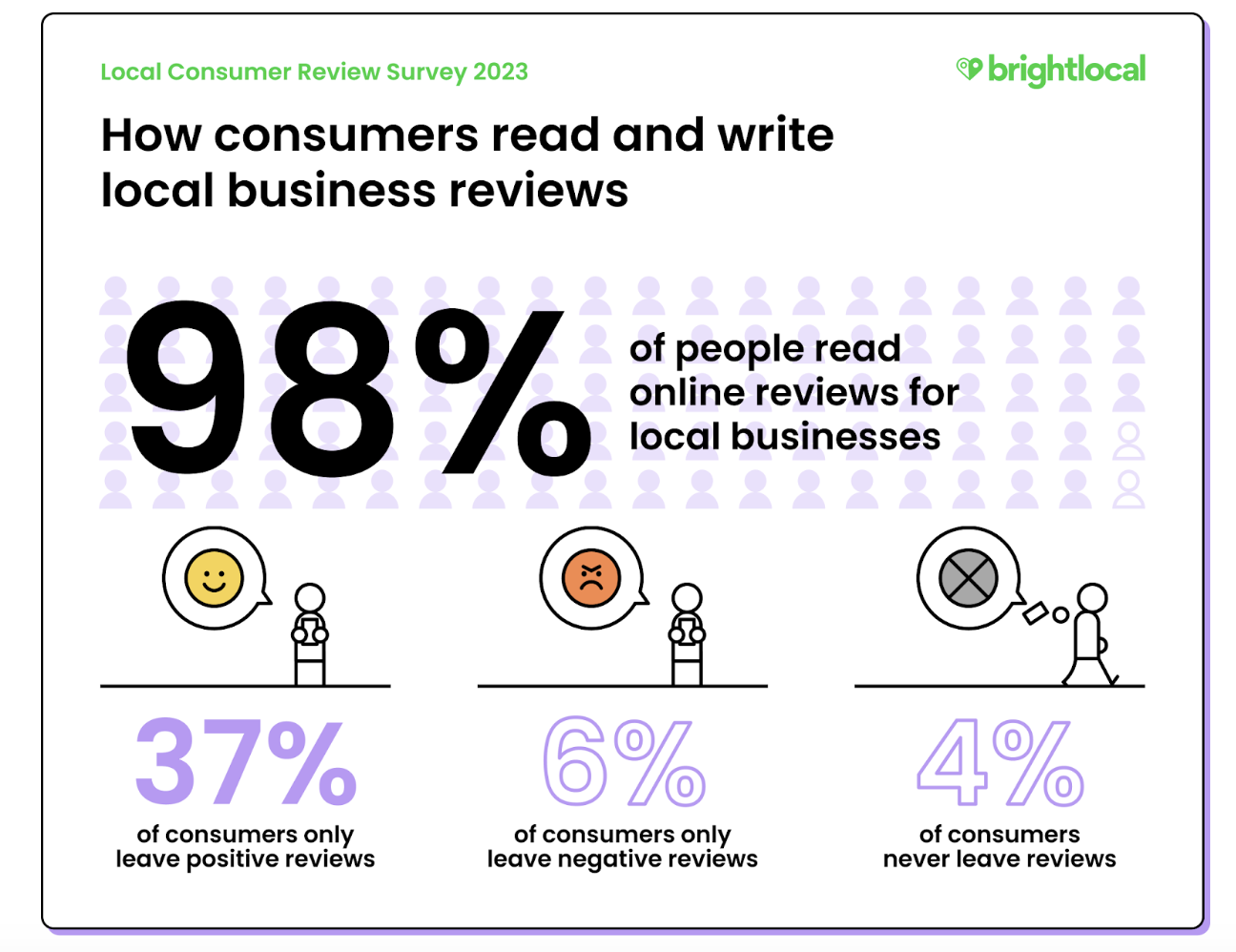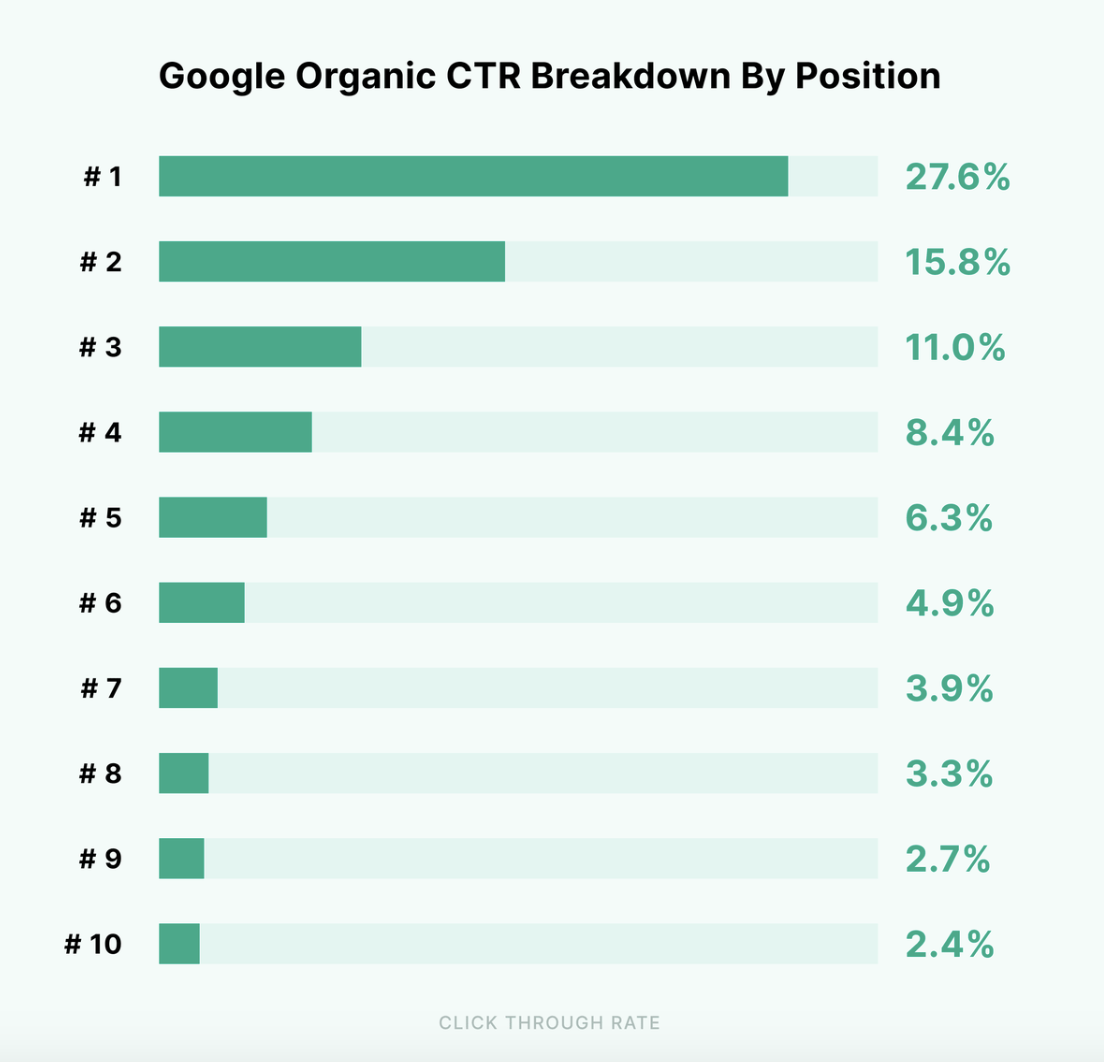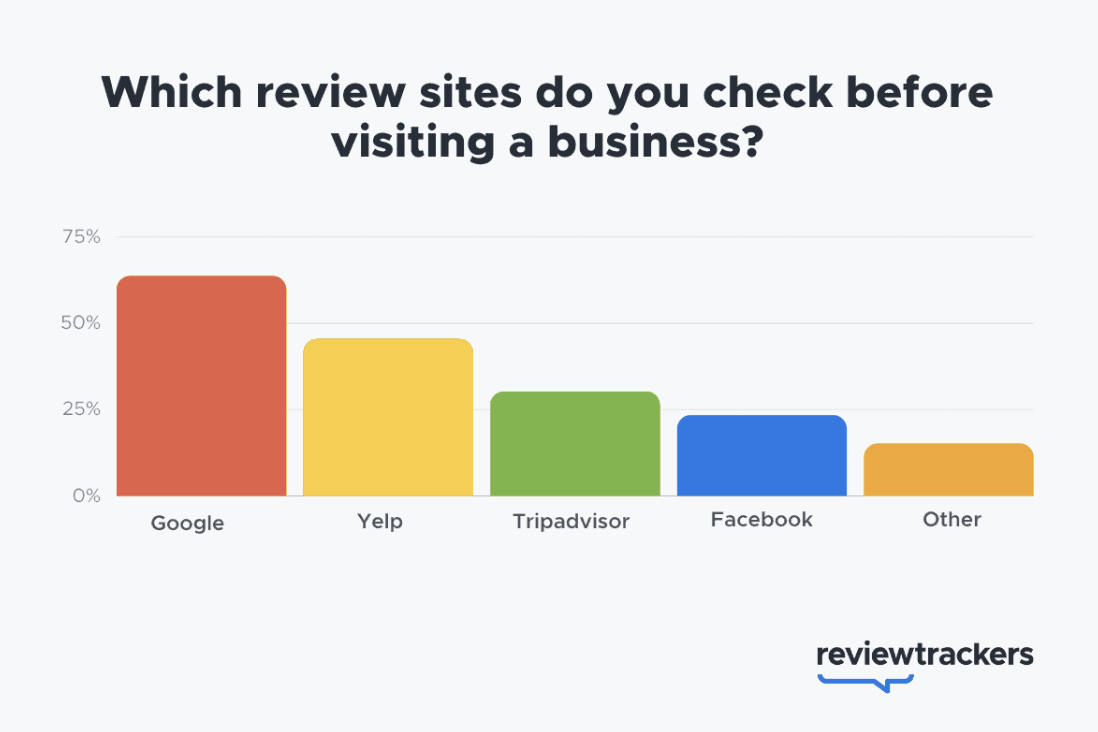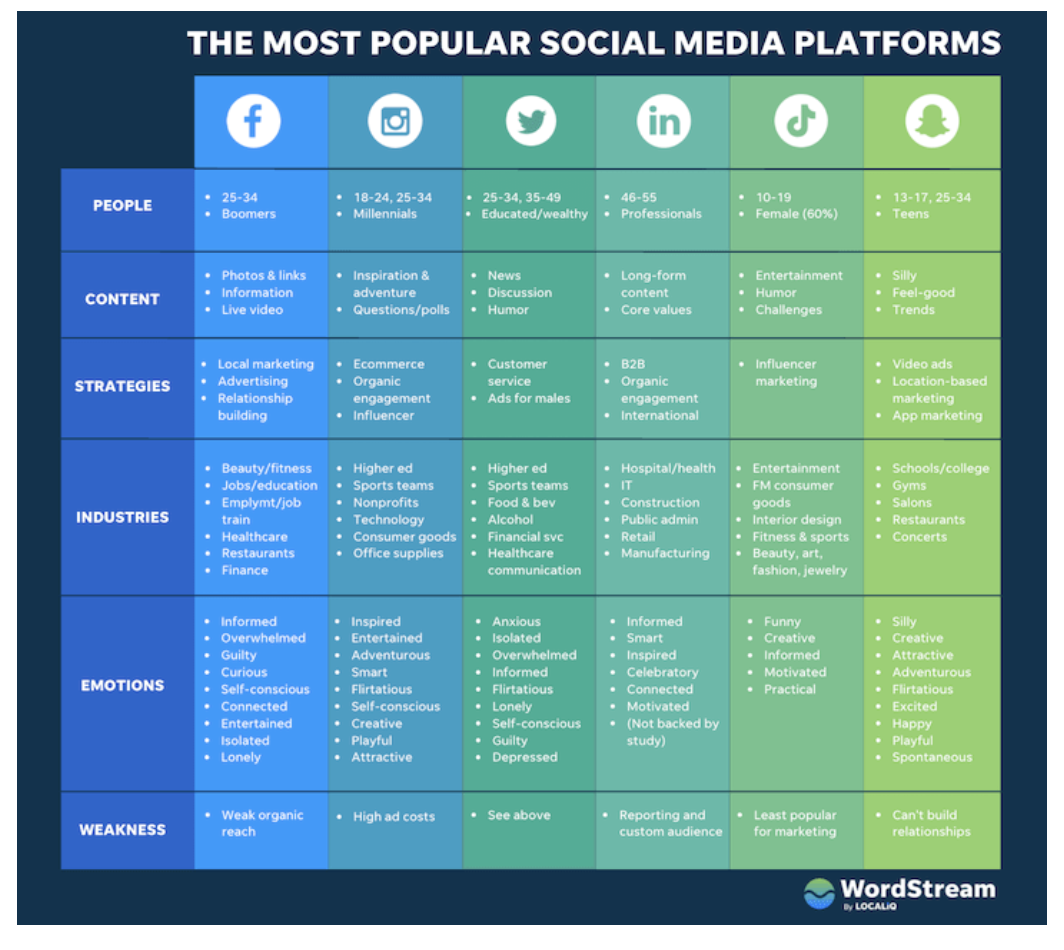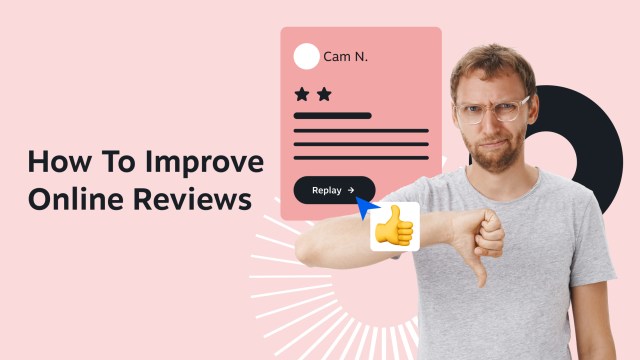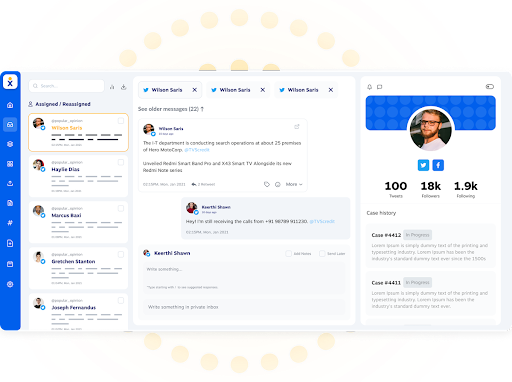Getting reviews for your small business is simple: offer the best possible product, service, and support, and customers will be more than willing to post a positive review for you.
But is it that easy to get customer reviews? Not exactly.
Customer reviews are paramount to influencing key purchasing decisions. They’re social proof that builds consumer trust in your product or service and establishes your overall credibility. In fact, 49% of consumers trust online reviews as much as personal recommendations from friends and family.
In this blog post, we’ll examine seven key strategies for increasing word-of-mouth about your brand and helping you make customer feedback something you actually want to read.
Here’s a quick primer from Jessica on getting your online business listings in shape.
What is a Customer Review?
A customer review is an evaluation shared by a customer about their experience with your product, service, or business.
These reviews can range from brief testimonials to detailed accounts of their interaction with your brand, covering aspects such as quality, customer service, usability, and the overall satisfaction level.
In most instances, you’d find customer reviews on various platforms, including company websites, social media, and third-party review sites like Yelp, TripAdvisor, Google, and Amazon.
Types of Customer Reviews
Text Reviews
Text reviews are written feedback provided by customers about their experiences with a product, service, or company.
They’re the most common form of customer reviews, and they can vary in length and detail, offering specific insights into what the customer liked or disliked. Key features include:
- Detailed descriptions of customer experiences.
- Can include both positive and negative aspects.
- Offer specific feedback that can guide potential customers and inform business improvements.
Star Ratings
Star ratings are a quick and effective way for customers to communicate their level of satisfaction with a product or service.
They typically range from one star (indicating dissatisfaction) to five stars (indicating high satisfaction). Key features include:
- Provide a summarized visual indication of satisfaction.
- Easy for potential customers to interpret at a glance.
- Often accompany text reviews for a more comprehensive overview.
Video Reviews
Video reviews are shared by customers through video platforms such as YouTube, social media, or on product pages.
These reviews can be particularly persuasive as they allow potential customers to see the product in use and hear directly from the reviewer, adding a layer of authenticity and trustworthiness.
Video reviews often cover the unboxing experience, product demonstrations, and overall impressions, providing a comprehensive view of the customer’s experience. Key features include:
- Highly engaging and can showcase the product in action.
- Add a personal touch, making the review feel more genuine and trustworthy.
- Allow for detailed demonstrations and explanations.
Image Reviews
Image reviews consist of photographs posted by customers of a product or service, often accompanied by a text review.
These images can show the product in a real-world setting, highlight aspects of the service, or point out specific features or issues.
Image reviews help validate the claims made in text reviews, providing visual proof that can enhance credibility and influence purchase decisions. Key features include:
- Offer visual evidence of a product’s quality or a service’s outcome.
- Enhance the authenticity of written reviews by providing visual context.
- Can highlight aspects of a product or service that are difficult to describe in words.
8 Ways to Get More Customer Reviews
1. Provide an excellent customer experience
There’s a direct link between happy customers and positive reviews. If you offer a poor customer experience, you can’t expect online reviews to be any different.
Delivering an exceptional customer experience at every customer journey stage should be your top priority.
In fact, if you ask at the wrong time, you could incur a low star rating and a fiery negative review.
Negative experiences, such as bad customer service, don’t take long to turn into bad reviews, so you’ll want to avoid them at all costs. When things go south, you can avoid a negative review by empowering your team to address the customer’s concerns immediately. Don’t let a customer’s contempt spill out onto review sites.
The best way to get reviews for your business is to offer proactive customer service.
Every moment counts, from greeting to product quality to order completion.
Long before a potential customer sets foot in a nearby restaurant found on Google Maps, their expectations are set by the personal recommendations left by past customers, the star ratings found in customer reviews, and any photos uploaded to the business listing.
Wendy’s is a great example of how a brand can build trust by addressing negative feedback and reassuring customers that appropriate steps will be taken.
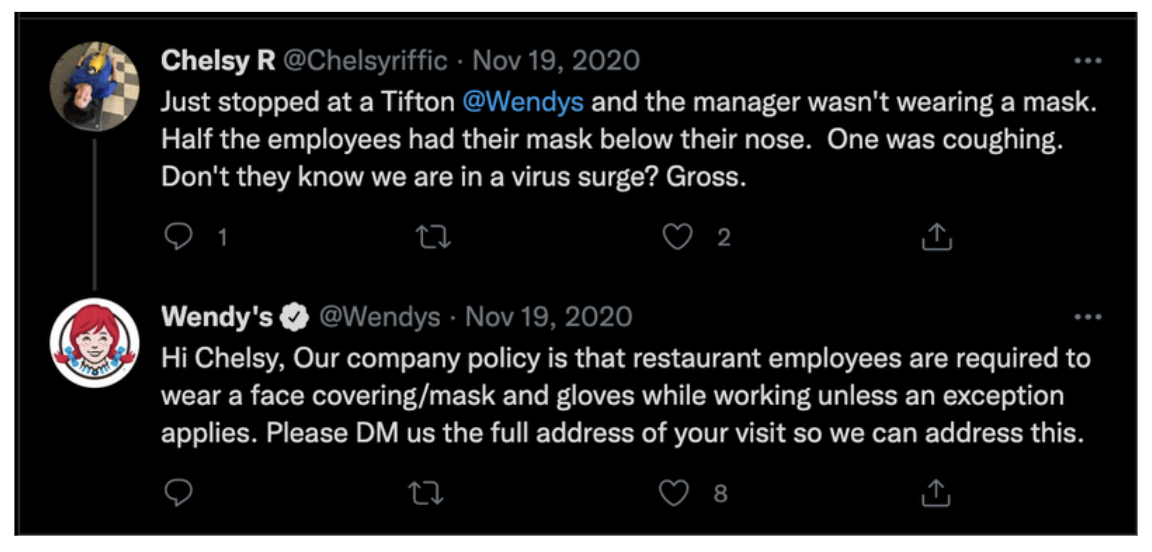
By resolving customer issues early, you prove that you value their business. With customer satisfaction at the heart of your business, getting happy customers to leave positive reviews becomes effortless. At the same time, tackling negative experiences becomes easy.
Here are some simple tips to create a positive customer experience.
- Be helpful, even when customers aren’t.
- Offer incentives and discounts to loyal customers (give ‘em the pickle).
- Ask if you can do anything to improve your product or order.
- When you know a customer is thrilled, ask for a product review.
Before proceeding, ensure that all your bases are covered to deliver a customer experience that legitimately earns raving fan testimonials.
2. Choose key moments to ask for reviews
Proactively asking for reviews can initially seem daunting, but a simple request can do wonders for your business. To be most effective, plan your request at the right time.
Don’t just ask for reviews following a conversion or new sale. Instead, select key moments when customers will most likely be satisfied with your product or service. For example, after successfully using your product or service, receiving excellent customer service, or reaching a milestone with your product or service.
Let’s say a customer purchases a new software product from your company. After using the product for a few weeks, they’re better positioned to determine whether they’re satisfied with its features and ease of use. You can email them for feedback or a review of your product on your website or a review platform.
Consider some passive ways to drive customer reviews, too. Examples include email signatures, automated customer surveys, and even recognizable badges on your site like TripAdvisor, Yelp, and Google Reviews. These tactful calls to action get eyeballs and clicks.
Here’s how Chewy uses automated email follow-ups to gather reviews from recent customers.
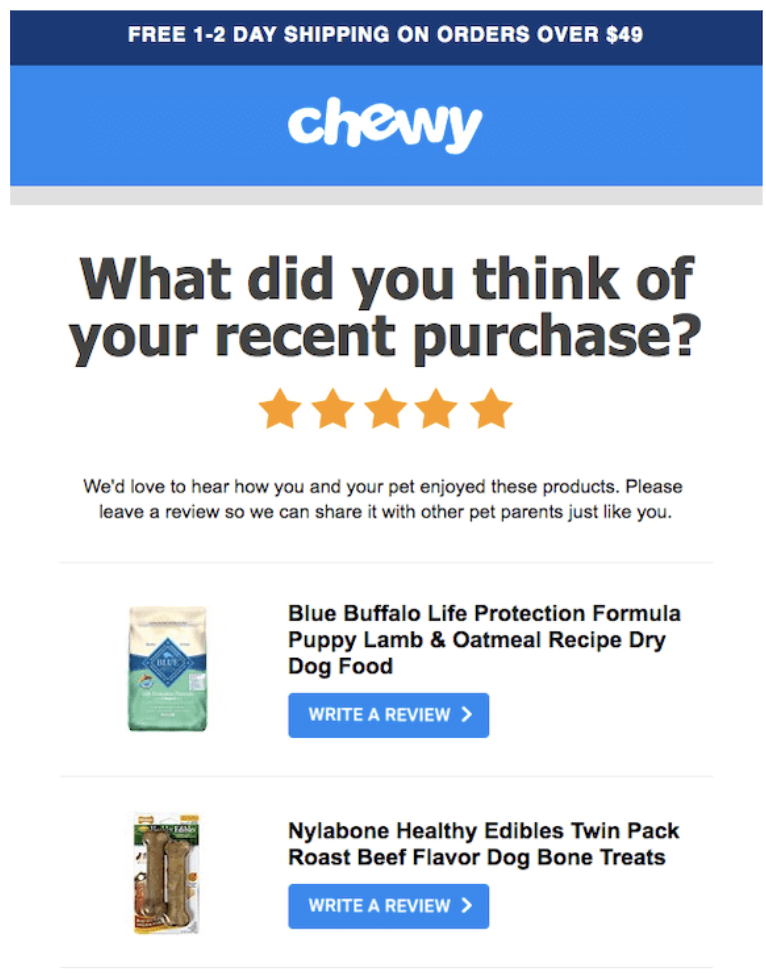
3. Simplify the review process
Leaving reviews shouldn’t be a complex process. The more complicated it is, the less likely customers are to write a review. Make submitting a review as easy and convenient as possible by providing clear instructions and direct review links with a clear call to action.
A good practice is to ensure the review platform does not require an account for customers to leave a review. Customers find signing up annoying and tend to leave without taking any action. Also, offer mobile-friendly options since many customers browse and shop on their smartphones.
Be tactical in your approach. When requesting a review via email, include a link to the review page. When requesting in person, have a QR code or printed link available that customers can scan or tap to leave a review.
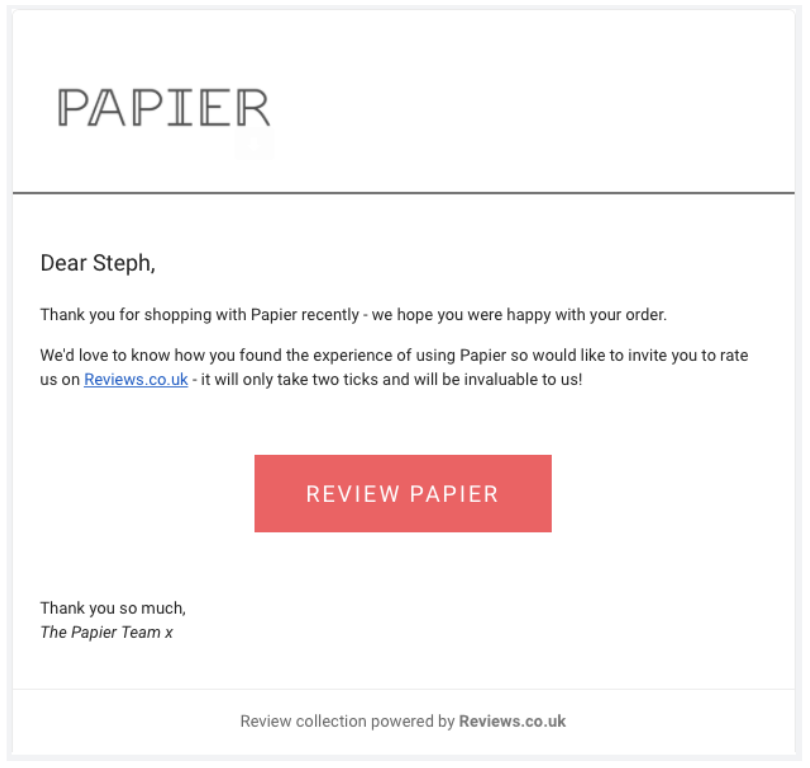
4. Use multiple review platforms
Using multiple review platforms is a great way to boost your visibility and credibility online. Potential customers trust a business with positive reviews across multiple platforms. You get:
- Increased visibility. The more places your business is listed, the more likely potential customers are to find you.
- Improved SEO. Review signals are a factor in Google’s ranking algorithm. Positive reviews across multiple platforms can help you rank higher in search results. Google reviews especially help your local SEO and attract a local customer base.
- Increased sales. Good reviews drive potential customers to purchase from your business.
- Improved customer retention. Review platforms simplify interacting and building relationships with customers.
Not all review platforms are the same. When choosing a review platform, consider your target audience and where they search for online reviews. For example, if you’re a local business, you should focus on platforms like Google My Business listing and Yelp. If you’re an e-commerce business, Amazon reviews are essential. And, if you’re a software company, Trustpilot and G2 are great third-party review sites for building credibility.
Additionally, monitor your business profiles to ensure they contain accurate information and don’t turn customers away when they want to review your business.
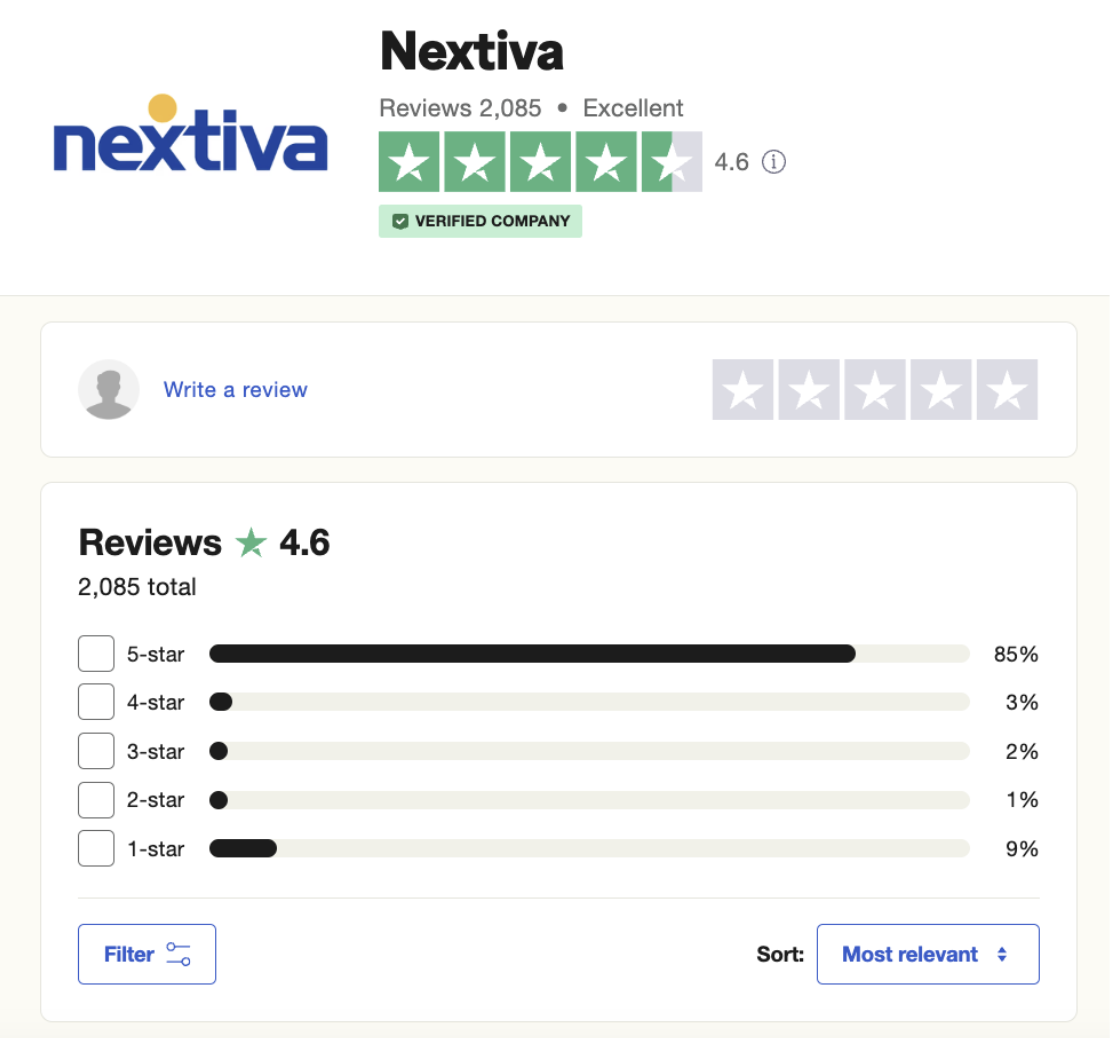
Must Read: The Complete Guide to Managing Your Business Listings
5. Scale review requests
Over half (60%) of buyers consider companies with at least 100 business reviews to be trustworthy. The higher the number of reviews, the better. Scaling your review requests is only natural, considering many buyers view more reviews as the gold standard of trust and quality.
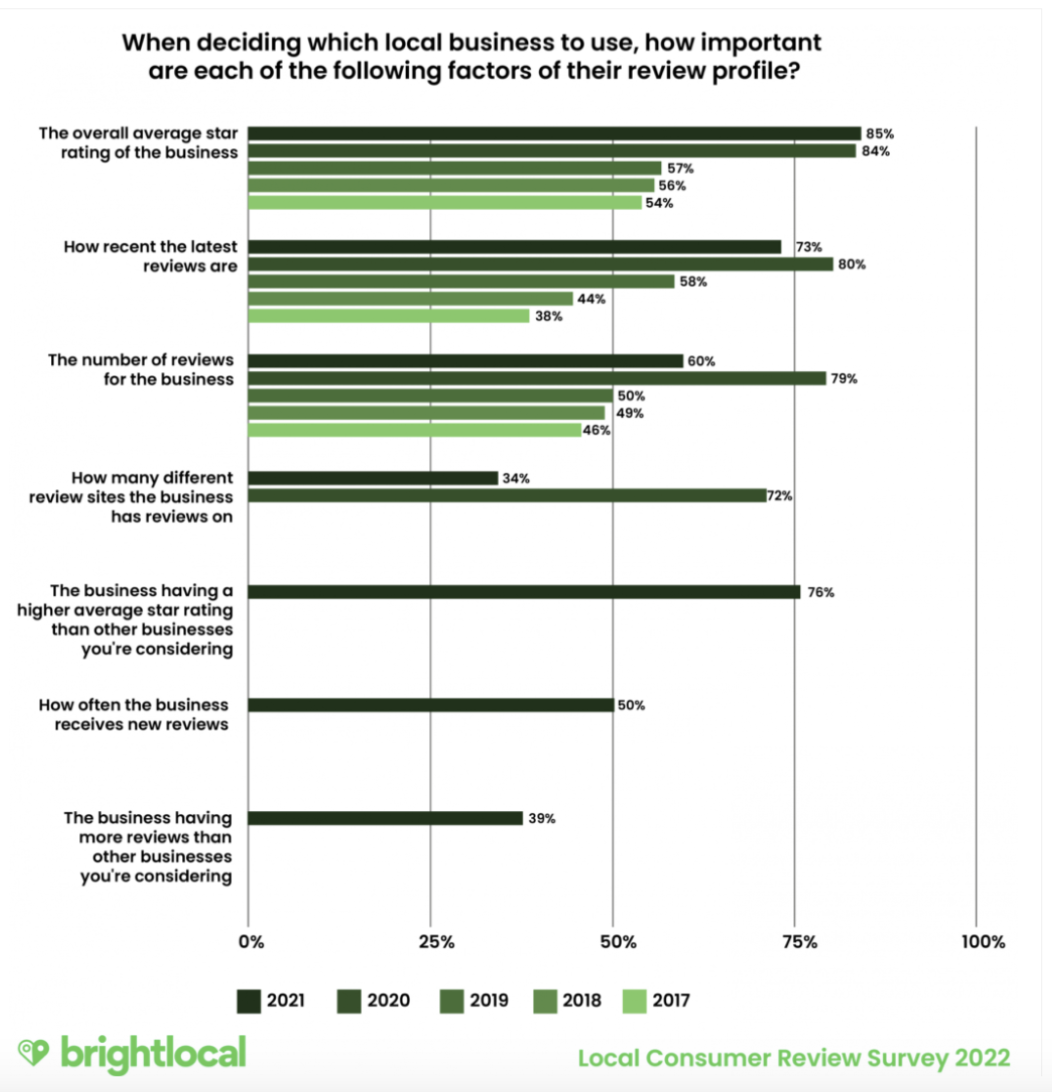
Besides making it easy for your customers to leave reviews, you can automate your review requests using online reputation management software. This saves you a lot of time and effort.
Another good practice is following up with customers. If a customer has not left a review after a purchase, send them an automated follow-up email or SMS message as a reminder. Make this part of your email marketing strategy.
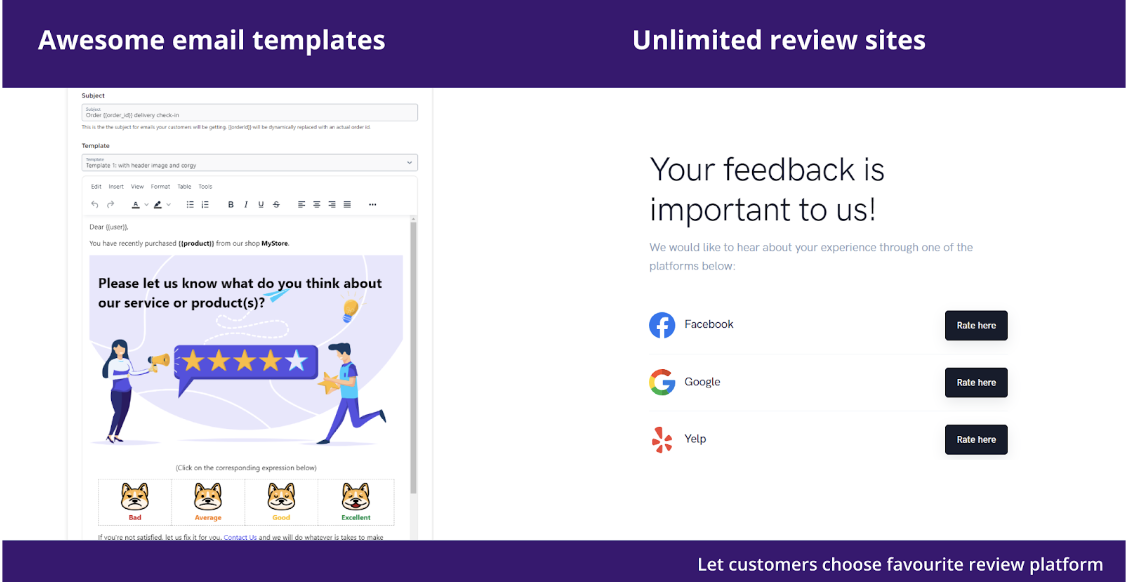
Pro tip: When scaling review requests, get authentic reviews from real customers. Avoid generating fake reviews or incentivizing customers to leave positive reviews. Amassing reviews in this way can actually negatively impact your brand reputation.
6. Reward loyal customers for their patronage
Customer loyalty is valuable, so it’s only fair to give your customers something valuable in return.
Bank on some of these ideas to incentivize the review process:
- Offer 10% off their next purchase.
- Give a free drink or appetizer when they leave a review on your restaurant.
- Offer the chance to win a gift card by leaving a review on Google or Yelp.
- Host a contest where customers can submit their most creative or helpful reviews to win prizes.
Appreciate customers who regularly leave reviews and encourage them to continue sharing their thoughts and experiences. For example, invite them to join your reviewers’ club to receive exclusive rewards like members-only content, discounts, early access to pre-launch products, birthday gifts, and more.
When offering incentives for reviews, be transparent and disclose the incentive upfront. Make it reasonable, as you don’t want to trick customers into leaving a dishonest positive review.
G2 makes it possible to garner authentic reviews while incentivizing the process quite well. Here’s a great example to follow.
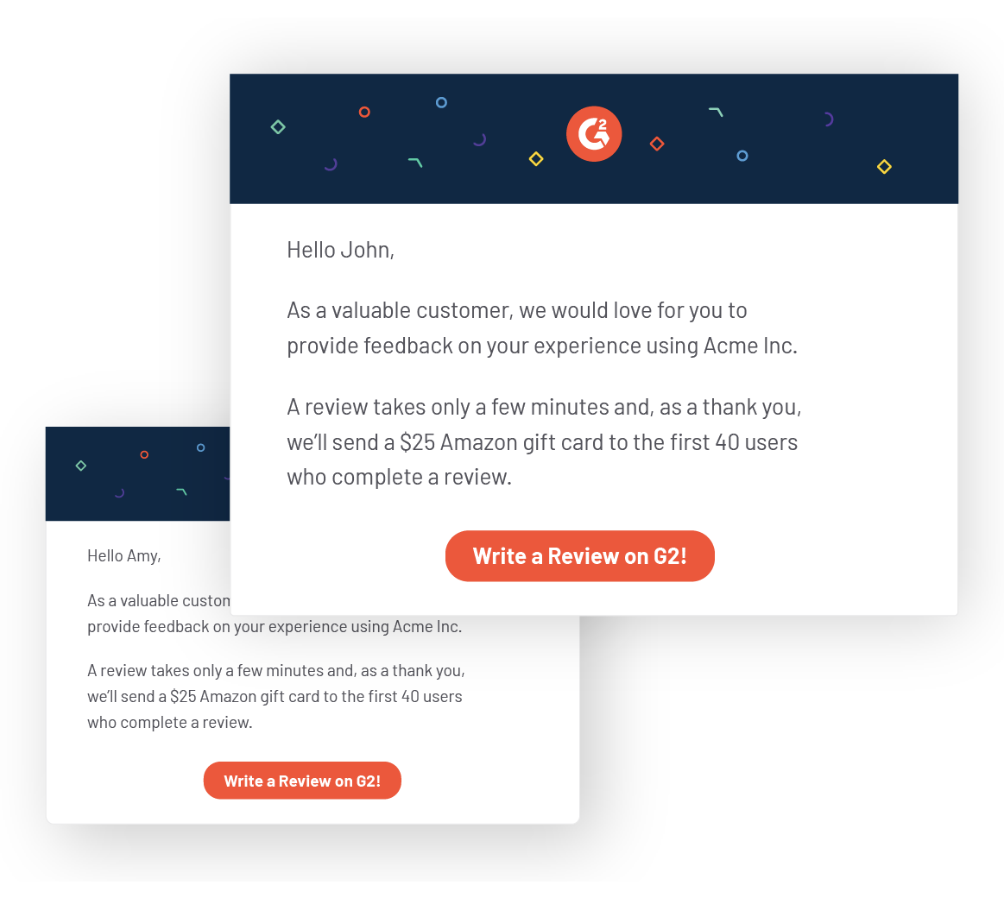
7. Personalize the review experience
Personalization is key to winning customers’ hearts, especially when optimizing their review experience. When you treat them well, they feel valued and will go the extra mile to show their appreciation for the experience with you.
For example, send a request to customers who recently purchased a new product and ask them to share their feedback. You can also ask customers who have interacted with your brand on social media or shown interest in a specific product category.
When personalizing review requests:
- Address the customer by name.
- Reference specific products or services the customer has purchased or shown an interest in.
- Explain why their feedback is valuable and how it’ll help you improve.
- Thank customers for their time and feedback.
Don’t forget to respond to reviews, whether positive or negative. Online reputation management software like Nextiva helps a great deal here. It eliminates manually responding to common reviews and even personalizes the review response.
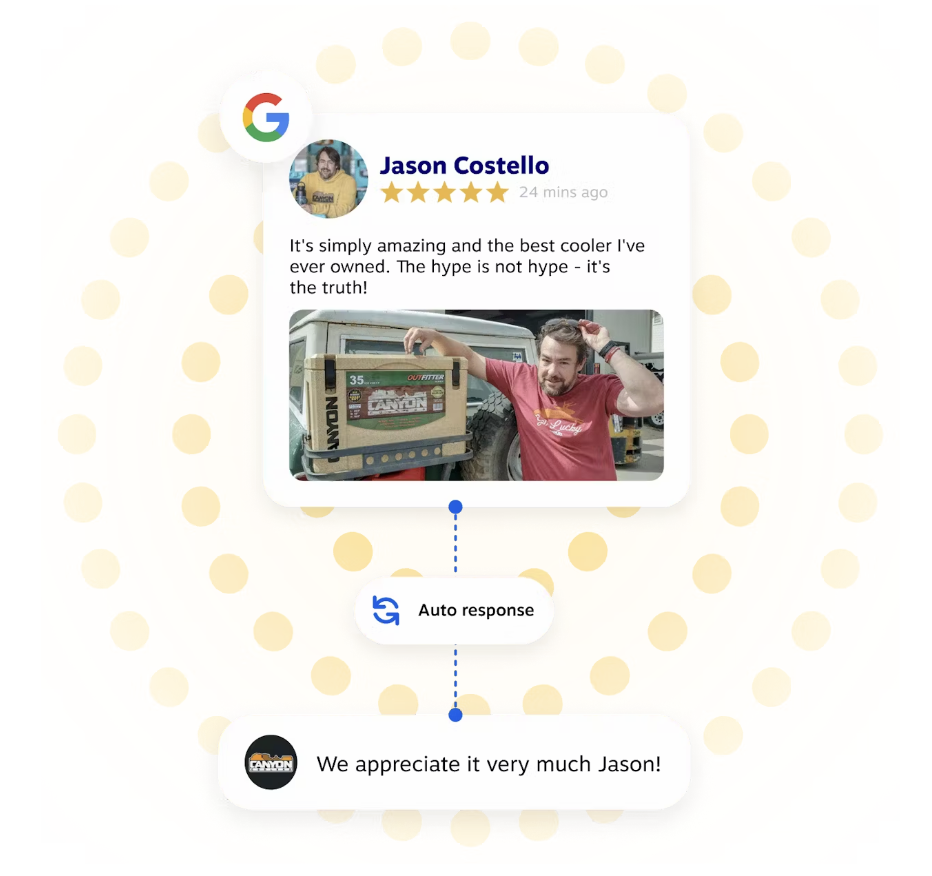
8. Use online reputation management (ORM) software
Monitoring and managing online reviews and mentions from multiple platforms can be hectic. ORM software like Nextiva makes the process hassle-free and easy by allowing you to track customer reviews on a variety of platforms like Google, Yelp, Facebook, Twitter, and more.
Generating and sending personalized review requests and responding to reviews via email, SMS, or social media (all from one platform) is also a breeze with ORM software. Nextiva puts you one step ahead and allows you to embed positive reviews from multiple platforms into your business website and social media pages.
With Nextiva, you make it easy not only for your customers to leave reviews but also for yourself to effectively manage your online reputation.
Here’s an example of how a restaurant can use Nextiva to review, manage, and respond to multiple online reviews from a single platform.
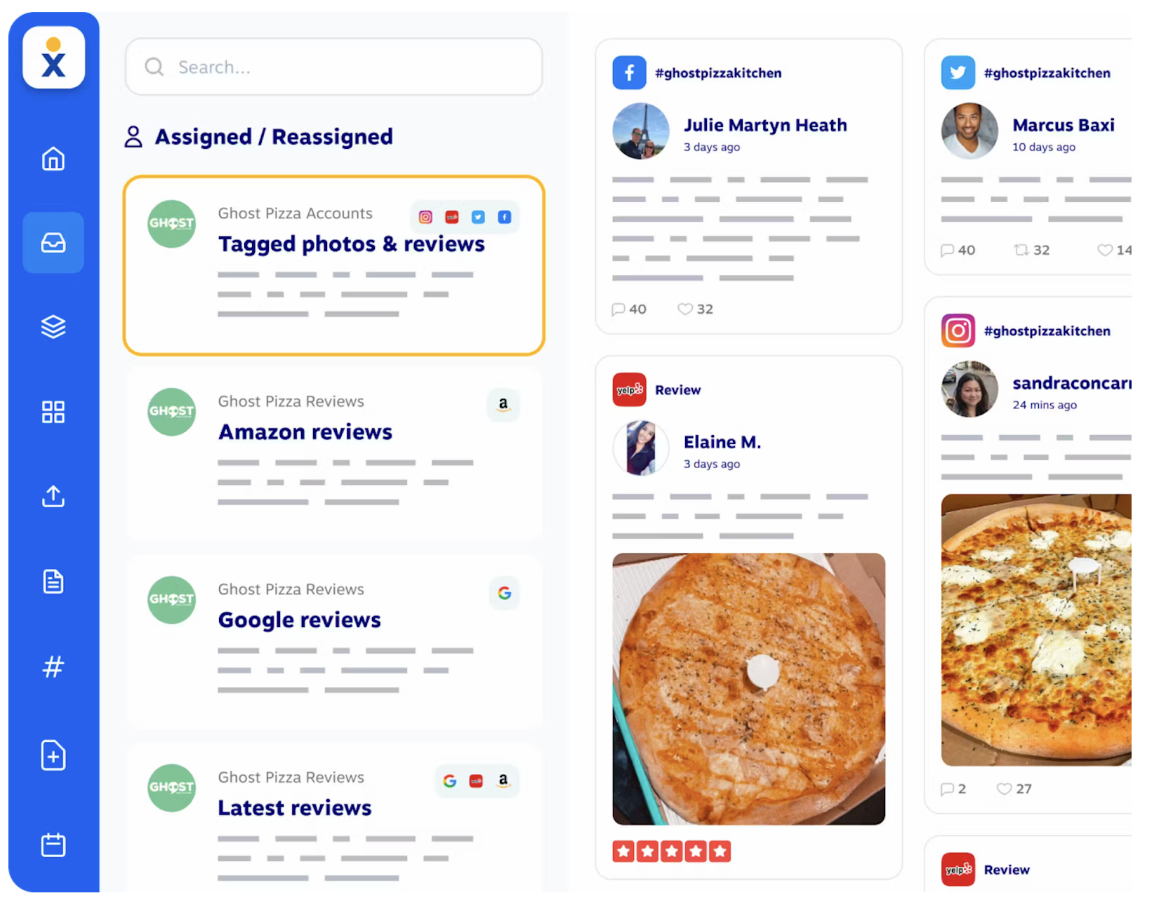
Creative Ideas to Get Reviews for Small Businesses
If you’re just starting out or a small business, you most likely lack the resources a large company has to collect customer reviews. But fret not. The following ideas will help you connect more closely with your customer base and get some reviews going.
Review for a cause
Make your review request less about your product and more about the interests you represent, with the review being just one part of the process. For example, if you sell dog shampoo or cat food, alongside your review request, commit to donating a certain amount to a related charity, such as a volunteer pet care center, for each review you receive.
Customers feel encouraged to leave reviews, knowing you and they are supporting a good cause. Post photos of the organizations and pets on your social media page to reassure them that it is for a legitimate cause.
Give an advance thank-you gift
You can also send your regular or new customers a surprise gift along with their purchase and add a note asking them to leave a review. Mention that the gift is an extended thank you. This can help you get new reviews that maintain your product’s credibility.
Suggest a specific aspect for customers to review
Ask your customers to rate specific aspects and details of your product and service. For example, the product feature they like best, their shopping experience, or the delivery speed. This keeps reviews specific rather than general, the latter having little impact on potential buyers.
Create a social media challenge
Ask your customers to share a photo of them using your product, such as an Italian spice product in a children’s snack or your plain white shirt product for a Halloween party costume. Create a custom hashtag and give the post with the most likes a chance to win a special token.
Reviews Should Be Authentic, Fun, and Mutually Beneficial
Customer reviews not only strengthen your business but also inform customers when purchasing.
A sense of peer recognition builds trust and instills confidence in a business. Authentic reviews beat artificial, unethically solicited reviews anytime and provide value to you as a business owner and the buyers.
It’s not always easy to get customer reviews, especially if you’re a new company or brand. However, if you approach it strategically, you can start immediately. Ensure you give customers a good reason to put in a good word for you online and offline.
It’s also about how well you can maintain that satisfaction and turn negative customer experiences and feedback into opportunities for improvement to make your customers feel valued.
Stay true to your values by serving your customers in the best possible way. Your reviews will speak volumes for you – right from the start!

![How to Get More Customer Reviews in 2024 [8 New Strategies & Ideas]](https://www.nextiva.com/blog/wp-content/uploads/sites/2/2023/09/How-to-Get-Reviews-for-Your-Business-scaled.jpeg?w=640)





